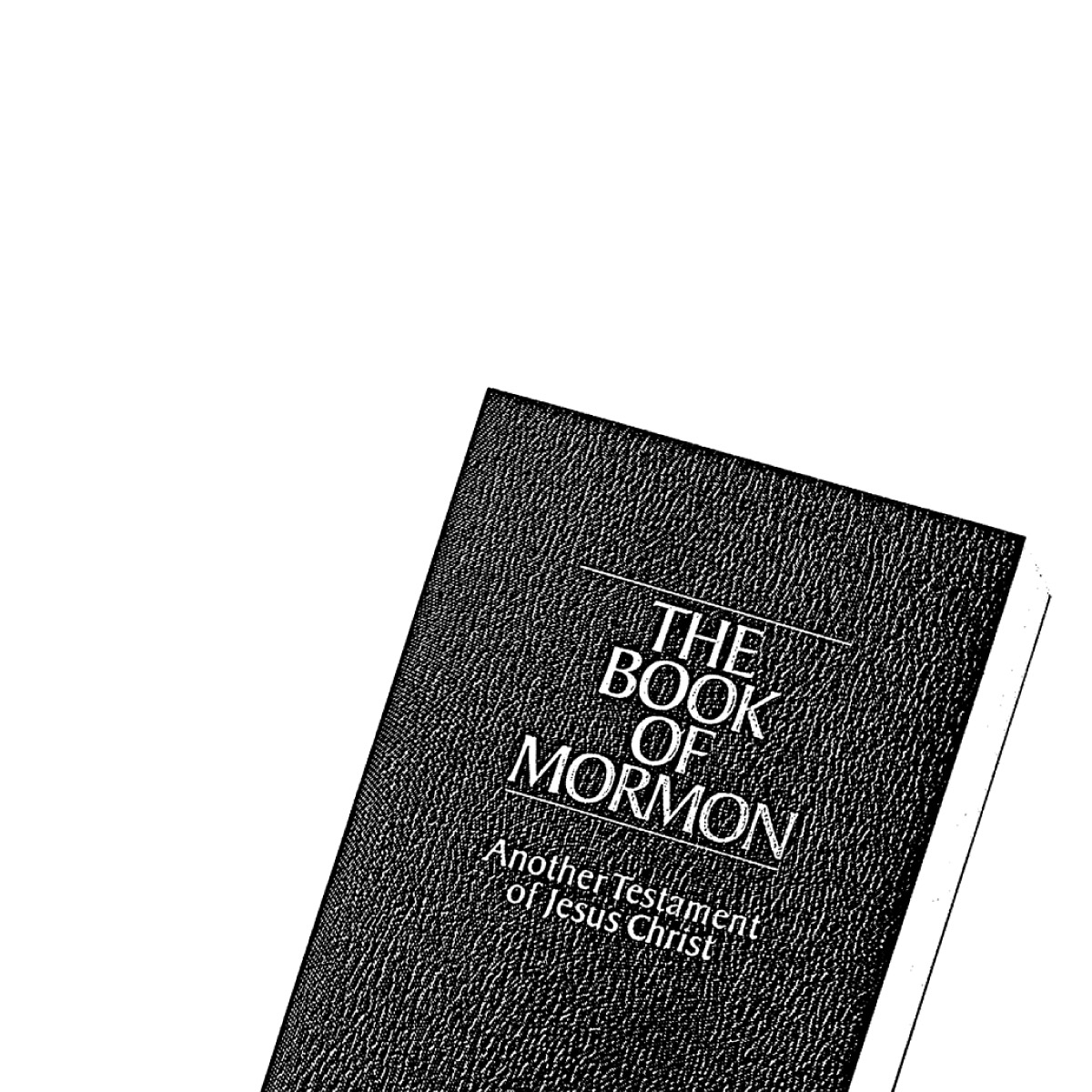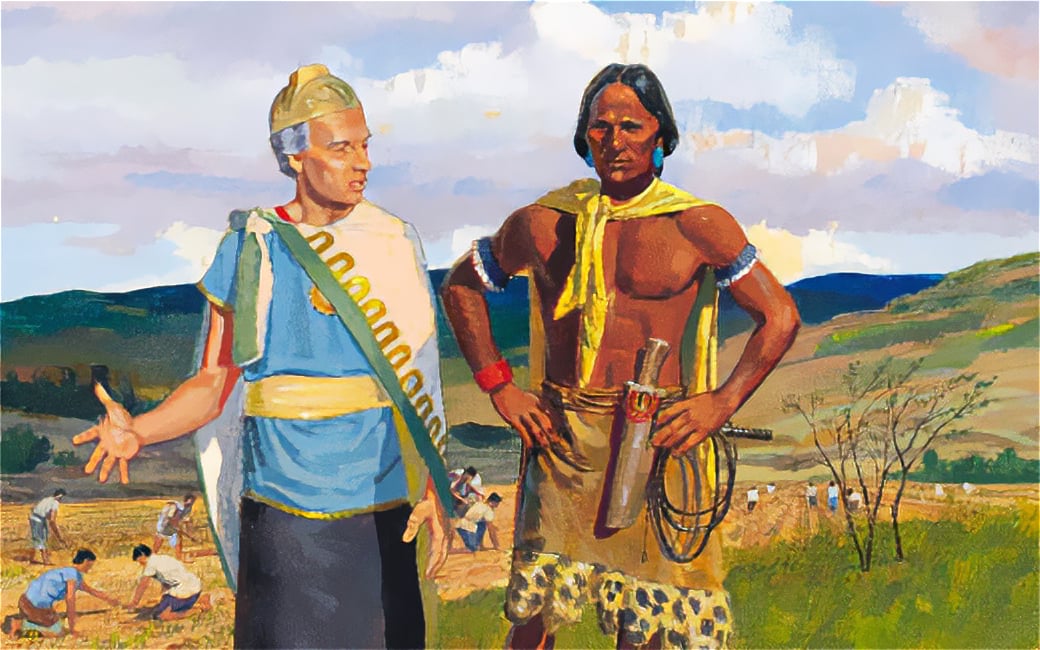Racism in the Book of Mormon

The Book of Mormon is another testament of Jesus Christ read by millions of people looking for inspiration and truth. Thus, it can be difficult for some readers to encounter racism in the narrative. Read on to explore the ethnocentric rhetoric, skin tones and “cursings,” and anti-racism in the Book of Mormon.
Or, you can skip the Q&A and jump straight to "Our Take."

Is the Book of Mormon racist?
Yes, in some ways. The Book of Mormon is an ancient account of competing ethnic clans over the course of about 1,000 years.[1] Sometimes those clans' records include racist rhetoric.[2] There are also more explicit verses in the Book of Mormon that say that God cursed Lamanites with "a skin of blackness."[3]
Are prophets in the Book of Mormon racist?
Yes, in that some of them expressed ethnocentric[4] beliefs against different tribes using racist language.[5] However, some of those same prophets also taught against racial prejudice.[6]
Is the gospel taught in the Book of Mormon racist?
No. The Book of Mormon does not promote or teach racism as a principle of the gospel of Jesus Christ and instead teaches the universal nature of God's love and Christ's atonement.[7] The Church condemns racism in any form and teaches that we are all God's children.[8]
Does the Book of Mormon teach that God cursed the Lamanites by changing the color of their skin?
Nephi taught that God "did cause a skin of blackness to come upon [the Lamanites]" to prevent intermarriage with the Nephites.[9] Both Jacob and Alma connected the dark skin with the curse.[10]
Scholars have offered various theories for a non-literal interpretation of these passages.[11]
Does the Church currently teach this?
No. In 2020, the "Come, Follow Me" study manual states "the curse of the Lamanites was that they were cut off from [the Lord’s] presence" and that a "mark of dark skin came upon the Lamanites after the Nephites separated from them. The nature and appearance of this mark are not fully understood."[12]
However, in the 2020 printed version manual, it stated that "the dark skin was the sign of the curse,"[13] but also that the "dark skin is no longer to be considered a sign of the curse."[14] The Church issued an apology and asked members to "disregard the paragraph in the printed manual."[15]
But did the Church teach this in the past?
Yes. For example, in 1957 Joseph Fielding Smith[BIO] taught that the "dark skin was placed upon the Lamanites so that they could be distinguished from the Nephites and to keep the two peoples from mixing. The dark skin was the sign of the curse."[16]
And in 1974 the Church published a pamphlet entitled "Lamanites and the Book of Mormon" which stated that the "Lamanites were marked by the Lord with a darker skin."[17]
Are the phrases "white and delightsome" and "skin of blackness" talking about skin color?
Possibly, depending on the context. For example, when Jacob chastised the Nephites about their mistreatment of the Lamanites, he said that they should "revile no more against [the Lamanites] because of the darkness of their skins,"[18] which seems to explicitly refer to skin pigment.
However, Nephi teaches that the "scales of darkness shall begin to fall from their eyes" and after many generations "they shall be a white and a delightsome people" which was later edited to be "pure and delightsome" by Joseph Smith.[19] This seems to be symbolic rather than a reference to skin pigmentation.
Doesn't the Book of Mormon just use colors like "white" and "dark" and "blackness" as metaphorical symbols?
Yes, sometimes. For example, Nephi speaks of garments being "made white" in Christ's blood[20] and cites Isaiah about the Lord covering the heavens with "blackness."[21] Jesus repeats his sermon on the mount about "black" versus "white" hair,[22] and Mormon described Jesus's followers' "countenance" as "white," with "nothing upon earth so white as the whiteness thereof."[23]
So could the references to skin color in the Book of Mormon just be metaphors, and not racial?
Possibly. Many scholars have argued that references to "white" and "black" skin are metaphorical, and that tribal prejudice was independent of skin color.[24][25] Joseph Smith may have relied on the common nineteenth-century definition of "blackness" which was used to describe corruption or wickedness.[26]
Weren't the terms "Nephite" and "Lamanite" often used as a political designation?
Yes. The terms "Nephite" and "Lamanite" was used as a political designation early in Book of Mormon history.[27] The text speaks of the "Lamanites" becoming "Nephites"[28] and vice-versa,[29] showing it was often a designation determined by political affiliation rather than lineage.[30]
Is there somewhere in the Book of Mormon that shows that Lamanites and Nephites had some kind of inherent difference in their appearance?
Yes, possibly (see below). In Alma 55, Moroni "caused that a search should be made among his men" to "find a man who was a descendant of Laman" to be sent to deceive the Lamanites into thinking they were also Lamanites.[31] This may imply that a "descendant of Laman" (a Lamanite) had physical characteristics, possibly skin pigmentation, that were distinguishable from Nephites.[32]
Table of possible racial references in the Book of Mormon
Reference | Text (emphasis added) | Explanation |
1 Nephi 11:13[33] | And I beheld the city of Nazareth; and in the city of Nazareth I beheld a virgin, and she was exceeding fair and white. | Nephi makes a reference to the virgin Mary, whom he describes as "exceeding fair and white." |
1 Nephi 13:15[34] | And I beheld that they were white, and exceedingly fair and beautiful, like unto my people before they were slain. | Nephi describes the Gentiles as "white" like his people, the Nephites. |
2 Nephi 5:21-23[35] | . . .they had become like unto a flint; wherefore, as they were white, and exceeding fair and delightsome, that they might not be enticing unto my people, therefore the Lord God did cause a skin of blackness to come upon them. . . And thus saith the Lord God, I will cause that they shall be loathsome unto thy people, save they shall repent of their iniquities. And cursed shall be the seed of him that mixeth with their seed: for they shall be cursed even with the same cursing. | Nephi indicates that God caused people to have "a skin of blackness" on them to prevent inter-tribal marriage. |
2 Nephi 26:33[36] | And he inviteth them all to come unto him and partake of his goodness; and he denieth none that come unto him, black and white, bond and free, male and female; and he remembereth the heathen; and all are alike unto God, both Jew and Gentile. | Nephi states that God considers everyone equal, including "black and white." |
2 Nephi 30:6[37] | And then shall they rejoice; for they shall know that it is a blessing unto them from the hand of God; and their scales of darkness shall begin to fall from their eyes; and many generations shall not pass away among them, save they shall be a white and a delightsome people. | Nephi uses the phrase "a white and a delightsome people" to describe what will happen when people begin follow God. |
Jacob 3:5[38] | Behold, the Lamanites your brethren, whom ye hate because of their filthiness and the cursing which hath come upon their skins, are more righteous than you. | Jacob correlates filthiness with the curse of the Lamanite skin color. |
Jacob 3:8[39] | O my brethren, I fear that unless ye shall repent of your sins that their skins will be whiter than yours, when ye shall be brought with them before the throne of God. | Jacob uses the phrase "their skins will be whiter than yours" to indicate that unless the Nephites repent, the Lamanites will be "whiter" than them. |
Alma 3:6[40] | And the skins of the Lamanites were dark, according to the mark which was set upon their fathers, which was a curse upon them because of their transgression and their rebellion against their brethren, who consisted of Nephi, Jacob, and Joseph, and Sam, who were just and holy men. | Alma writes that the dark skin of the Lamanites was a mark and a curse because of transgression. |
3 Nephi 2:15-16[41] | And their curse was taken from them, and their skin became white like unto the Nephites; And their young men and their daughters became exceedingly fair, and they were numbered among the Nephites, and were called Nephites. | Nephi explains that when the curse was removed from the Lamanites, their skin became white. |
4 Nephi 10[42] | And now, behold, it came to pass that the people of Nephi did wax strong, and did multiply exceedingly fast, and became an exceeding fair and delightsome people | Nephi describes how the people of Nephi lived in harmony and "became an exceeding fair and delightsome people." |
Mormon 5:15, 17[43] | For this people shall be scattered, and shall become a dark, a filthy, and a loathsome people, beyond the description of that which ever hath been amongst us. . . . They were once a delightsome people, and they had Christ for their shepherd; yea, they were led even by God the Father. | Mormon writes about how the Lamanites used to be "a delightsome people" and will eventually "become a dark, a filthy, and a loathsome people." |
Doesn't the Book of Mormon teach that all ethnicities are equal in the sight of God?
Yes. For example, Nephi wrote that "all are alike unto God" and "denieth none that come unto him, both black and white, bond and free"[44] (see below).
However, at the same time, multiple Book of Mormon editors and commentators, including Nephi, also made negative ethnic stereotypes about the Lamanite people.[45]
Table of texts in the Book of Mormon that teach against racism
Reference | Text (emphasis added) | Explanation |
1 Nephi 17:35[46] | "Behold, the Lord esteemeth all flesh in one; he that is righteous is favored of God. But behold, this people had rejected every word of God, and they were ripe in iniquity;" | God views "all flesh in one"; one's status as "favored" is determined by righteous actions. |
2 Nephi 26:33[47] | ". . .he enviteth them all to come unto him & partake of his goodness & he denieth none that come unto him black & white bond & free male & feemale [sic] & he remembereth the heathen & all are alike unto God both Jew & Gentile. . ." | The Gospel is for everyone; skin color, social standing or religious differences are irrelevant as far as God's love is concerned. |
Jacob 3:5, 9[48] | Behold, the Lamanites your brethren, whom ye hate, because of their filthiness and the cursings which hath come upon their skins, are more righteous than you. . .Wherefore, a commandment I give unto you. . .that ye revile no more against them, because of the darkness of their skins; | Jacob publicly chastised the Nephites for hating the Lamanites because of their skin color and for having racist attitudes. |
Alma 26:37[49] | Now my brethren, we see that God is mindful of every people, whatsoever land they may be in; yea, he numbereth his people, and his bowels of mercy are over all the earth. | God is mindful of all people, despite nationalities and no matter their place of origin. |
Helaman 7:23-24[50] | . . .it shall be better for the Lamanites than for you except ye shall repent. For behold, [the Lamanites] are more righteous than you, for they have not sinned against that great knowledge which ye have received; therefore the Lord will be merciful unto them; | Righteousness is independent of tribal affiliation. |
4 Nephi 1:17[51] | There were no robbers, nor murderers, neither were there Lamanites, nor any manner of-ites; but they were in one, the children of Christ, and heirs to the kingdom of God. | God's covenant people, when they are living righteously and in peace, are not divided socially but instead are "one," being "the children of Christ" and heirs of the Kingdom of God. |
Did Church leaders believe the Book of Mormon taught intermarriage with Native American indigenous groups would make them more "white and delightsome"?
Yes, some did. In 1861, William W. Phelps recalled that Joseph Smith gave an 1831 revelation authorizing missionaries in Missouri to take Native American women as wives and that this would cause their "posterity [to] become white, delightsome, and just."[52] Some twentieth-century leaders also echoed this view.[53]
Related Question
Did the Church change the introduction to the Book of Mormon on Native American ancestry in response to DNA issues?
Read more in DNA and the Book of Mormon
Did Church leaders use the Book of Mormon to defend the priesthood/temple restrictions?
No. Church leaders and authors who commented on the Book of Mormon understood it to be more relevant to Indigenous Americans or "Lamanites" than peoples of African descent.[54] Sometimes, however, Church leaders and members used the Book of Mormon to advocate for race-based judgments more generally.[55]
Related Question
Did Joseph Smith implement a policy to restrict Black members of the Church from the priesthood and temple ordinances?
Read more in Black Saints and the Priesthood (Joseph Smith era)
Has the Book of Mormon affected the way Latter-day Saints see Indigenous Americans?
Yes, probably. Latter-day Saints see Indigenous Americans as descendants of Book of Mormon peoples and thus, as members of the House of Israel.[56] Since at least the mid-nineteenth century, they have considered themselves to be special supporters of Indigenous American peoples, including special missions to Indian reservations and Latin America in the nineteenth and twentieth centuries.[57][58]
Did Joseph Smith change the original words like "white and delightsome" to "pure and delightsome" in the Book of Mormon to be less racist?
Probably not. Although Joseph was relatively sympathetic towards Black Americans,[59] he still maintained racist views and it's unlikely that the edits made were to be less racist.[60] In the 1840 version of the Book of Mormon, Joseph Smith made the change in the verse now 2 Nephi 30:6.;[61] however, he left the term "white" that may refer to skin color, in six other places.[62]
Related Question
Was Joseph Smith racist?
Read more in Black Saints and the Priesthood (Joseph Smith era)
Were the chapter headings in the Book of Mormon changed to be less racist?
Yes, probably. In 2010, the phrase "skin of blackness"[63] was removed from a heading as well as the phrase "a dark, filthy, and loathsome people" in the online version of the Book of Mormon.[64] While the text of these sections remains the same, the headers were changed to emphasize that the Lamanites were spiritually lost.[65]
Related Question
Was the modern (twentieth-century) Church racist?
Read more in Black Saints and the Priesthood (1895–1978)
Has the Church condemned racism?
Yes. The Church has stated, "Church leaders today unequivocally condemn all racism, past and present, in any form."[66] The Book of Mormon condemns racism as well[67] and states that "all are alike unto God."[68]
- Jordan
“I think the people in the Book of Mormon definitely had struggles with racism. It was ultimately their downfall. I don’t know about the verse that talks about the lamanites turning white… did they just make that up? Doesn’t pass the vibe check.” - Joyce F.
“I like your take. The Book of Mormon, just like the Bible, cannot be the infallible word of God because men are subject to their unconscious beliefs as they interpret scripture. Only our Heavenly Father is Perfect. We are called to be Perfect; but does that include being human?” - K.C.
“I don’t agree with the rather blunt “yes, in some ways” about the BoM being racist. Perhaps with certain readings or interpretations by our standards. But many of the beliefs of the BoM interpreted this way are merely interpretations and don’t align with the overall message.”



 about this topic
about this topic